S6;E21
~ February 25, 1974
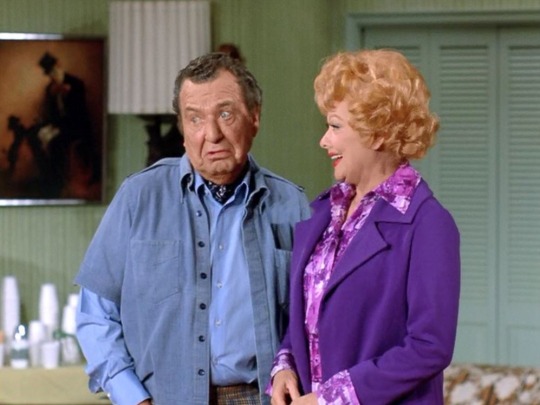

Directed
by Jack Donohue ~ Written by Robert O’Brien
Synopsis
To
drum up business for the Unique Employment Agency, Lucy replies to an ad in
the newspaper to supply musicians for Phil Harris’ orchestra. The candidates
she brings Harris are all of different ethnicity,
creating a multi-cultural musical act.
Regular
Cast
Lucille
Ball (Lucy
Carter), Gale
Gordon (Harrison
Otis Carter)
Lucie
Arnaz (Kim
Carter) does not appear in this episode, although the final credits
do state “Lucie Arnaz Wardrobe by Alroe”. The character is
mentioned by Lucy in the dialogue.
Guest
Cast

Phil
Harris
(Himself) previously played soused songwriter Phil Stanley in a 1968
episode of “The Lucy Show.” Harris was known as a bandleader who
became a comic radio star as a Jack Benny sidekick in the 1930s.
Although his fondness for booze was largely a creation of the Benny’s
writers, Harris played the part to the hilt. Harris was mentioned
in “Lucy
Gets Jack Benny’s Account” (TLS S6;E6) when
Benny made a reference to Harris’ persona as a lush. In “Lucy
and Joan” (TLS S4;E4) Joan
(Joan Blondell) says she’s been in pictures so long she saw Phil
Harris take his first drink! Harris
was married to movie star Alice Faye from 1941 until his death in
1995 at age 91.

Tommy
Farrell
(Fred, Phil Harris’ Arranger) was on Broadway in three plays between
1942 and 1947. He was seen on “The Lucy Show” twice. This
is the last of his six episodes of “Here’s Lucy.”
In
the final credits Farrell is billed as “Freddie” although Harris
never calls him anything but “Fred.” The name is probably a
tribute to Lucille Ball’s brother and grandfather, both of whom were
named Fred.

Marl
Young
(Marl Young, Pianist) was
the “Here’s Lucy” musical director and often appeared on camera
when episodes included music.
Young (as the character) says he’s been working as an accountant. His last gig was with the
Boston Philharmonic.

Michaelani
(Mr. Yamoto) makes the third of his four screen appearances here.
Mr.
Yamoto plays the clarinet and says he speaks several languages.
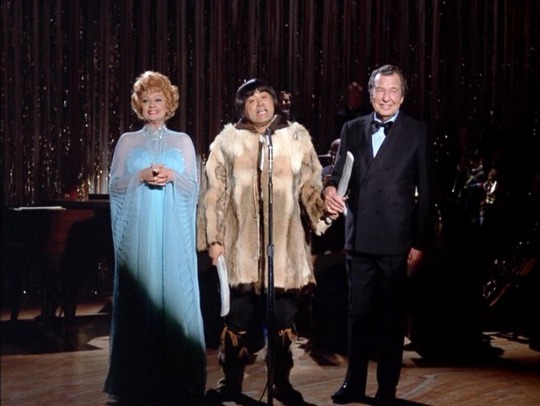
Anthony
Ortega
(Ooka Lanooka) was a professional saxophonist (although he does not play the instrument here) and is making his screen acting debut.
Ooka
Lanooka plays the whale bones and is number one in his field. Back in
Alaska, he worked a couple of one-night stands, which Lucy calls “working steady” because
the nights in Alaska are six months long!

Henry
L. Miranda
(Pancho Rodriguez)
Pancho
is a trumpet player formerly of Herb Albert and the Tijuana Brass.

Jack Kelso (Saxophonist
in Harris’ Band, uncredited) worked
as a studio musician between 1964 and 1984, in addition to recording
with Mercer Ellington and Mink
DeVille, touring worldwide and appearing in “The Concert for
Bangladesh” as part of Jim Horn and the Hollywood Horns.
Ted
Nash (Saxophonist
/ Clarinetist in Harris’ Band, uncredited) was a saxophonist with Les
Brown and His Band of Renown. In addition to being a studio musician
for many films, he worked on the series “Peter Gunn” (1958-59).
The
other members of Harris’ orchestra, including ‘Hawaiian’ guitarist Malikalua,
are played by uncredited musicians.


Two days after this episode first aired, February 27, 1974, The New York Times broke the news that Lucille Ball had decided not to continue with “Here’s Lucy” and that the show would finish production at the end of its current season. This came as no surprise to anyone, including viewers.

The
the book “Lucy A to Z: The Lucille Ball Encyclopedia” by Michael
Karol, it is noted that Anthony
Ortega
was a professional saxophonist who was cast by “Here’s Lucy”
Musical Director Marl Young. Ortega remembers nearly stepping on
Lucille Ball’s foot while crammed into the booth to pre-record the
music for this episode. Afterwards, Ball complimented him by kissing
him on the cheek and saying “You
did a good job. I hear that you are a very fine saxophone player.”
High praise, considering that all Ball’s TV characters were amateur
saxophonists. Ortega shared the booth with fellow sax
players Jack Kelso and Ted Nash who also appear in the episode.
The
script was dated January 9, 1974, meaning there was very little time
between filming and broadcast – a mere seven weeks.

In
her DVD introduction to the episode, Lucie Arnaz reminds us of her
mother’s early advocacy for hiring minorities, including Lucie’s own
father, Desi Arnaz, whom CBS was skeptical about portraying Ricky
Ricardo. She also states that Marl Young was the first African
American Musical Director of a major television show. Lucie calls
this episode “Music for Everyone’s Ears.”

Lucy
says she was at the Wilshire Bowl the night Alice met Phil. This is a
reference to Phil Harris’ second wife, movie star Alice
Faye.
Faye herself was mentioned on “The Hollywood Unemployment Follies”
(S3;E22) when Lucy and Carol Burnett discover a rack of costumes worn
by Faye and Betty Grable. Harris
and his orchestra had a regular engagement at the Wilshire Bowl, a
restaurant in Hollywood located on Wilshire Boulevard which operated
from 1933 to 1943. The building was demolished in 1982. Harris
married actress / singer Alice Faye in 1941.
Lucy says if she’d gotten to the Wilshire Bowl five minutes sooner
she might be Mrs. Phil Harris!

“Phil
Harris, popular star of stage screen and television, is taking a
sentimental journey back into the music business. Between Las Vegas
engagements, Phil is organizing a big band to encourage the
increasing popularity of this kind of music. The former maestro has
been engaged by the Club Internationale to inaugurate a big band
policy for this popular night spot. He is looking for musicians with
big band know-how to augment his orchestra now in rehearsal.”
Lucy’s morning paper of choice is the Globe-Record. “Here’s Lucy” propmaster Kenneth Westcott probably got this newspaper from from a small prop company called The Earl Hays Press, one of the oldest newspaper prop manufacturers in Hollywood.
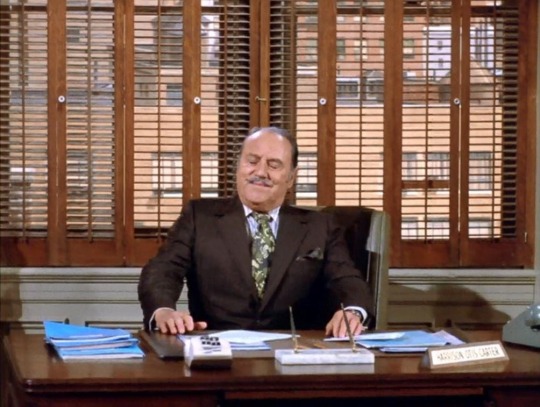
As
the series draws to a close, it might be a good time to mention the
ubiquitous blue report covers used at the Unique Employment Agency.
The use of this color cover dates back to the Westland bank offices on “The
Lucy Show.” These are probably bound scripts recycled as props –
but always with the blue cover. Blue was a good color for Lucy!
To
drum up business, Harry arranges a lunch meeting with the Northshore
Insurance Company. In many episodes like this one, Gale Gordon’s
character is in the set-up (generally the first scene) and then
disappears from the narrative.

When
Lucy arrives at the nightclub, Phil Harris is finishing a rehearsal
of “Is
It True What They Say About Dixie?“
a 1936 song written by Irving Caesar, Sammy Lerner and Gerald Marks.

Lucy
tells Harris that they have met before. She had Harris autograph her
program during his performances at the Frontier in Las Vegas the previous summer.
Lucy says she took the bus to Vegas. Frontier was
the second resort that opened on the Las Vegas Strip and operated
continuously from October 1942 until it closed on July 16, 2007 and
was demolished. The
Frontier’s sign was glimpsed in the opening montage of “Lucy and
Wayne Newton” (S2;E22).

When
Mr. Yamoto (who is of Japanese descent) continually bows instead of
speaks, Lucy reassures Harris that he’s very good. Harris replies
“Must
be. He ain’t hit a note and he’s already taking bows.”

When
Harris questions Lucy about the number of minorities she’s brought to
audition, he admits that he is Native American himself, but he
doesn’t let it get around because “they
might cut off my whiskey.”
He adds if it wasn’t for [Equal] Opportunity, he might be “stringing
beads at Wounded Knee.”
I reality, the idea that Harris was Native American is as
exaggerated as his penchant for spirits. Harris’ birth name was
Wonga, which is Cherokee for “speedy messenger” but the name is
in honor of a friend of his parents’ who worked in their circus; nothing to do with his heritage.
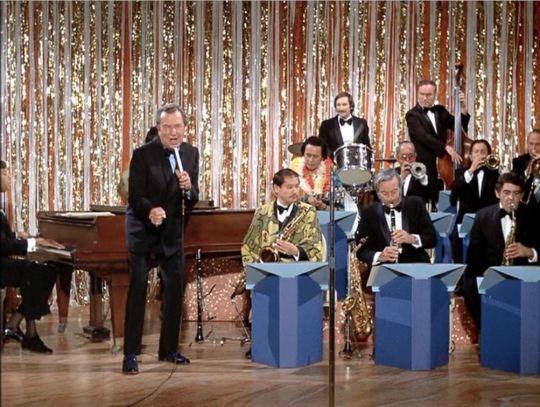
The
only candidate that doesn’t get to perform solo is named Malikalua.
He is a Hawaiian guitar player who Lucy claims works as a plumber during the day
but sometimes subs with the Les Brown Band at night. In the final
performance the guitarist on the bandstand wears a Hawaiian shirt and many colorful leis around his neck. This is Malikalua.
Phil Harris: Look,
honey. Are you from the employment agency or the United Nations?

To
appease a women’s lib group picketing the nightclub, Lucy is quickly recruited
into Harris’ act. She provides the obligatory clapping for “Deep in the Heart
of Texas.” In “Lucy and the Used Car Dealer” (S2;E9) Lucy
Carter disguises herself as ‘Laredo
Lucy’ and sings a bit of “Deep
in the Heart of Texas,” a
1941 song by June Hershey and Don Swander.

Harris
sings his hit song “That’s
What I Like About the South”
by Andy Razlaf and is joined by Lucy and his recently hired
musicians.
Specially
written lyrics are sung by the diverse musicians and by Lucy. Her’s
seem particularly applicable to her character in Mame,
although it is not overtly stated:
“Men
have names like BeauregardTip
their hat when they pass your yardThey
act so cool but they fall so hardThat’s
what I like about the South”

In
the about-to-be-released film, Southern gentleman Beauregard Jackson
Pickett Burnside (Robert Preston) “falls
so hard” for
Mame Dennis (Lucille Ball) that the two get married.
During
Harris’ performance at the Club Internationale, the orchestra members stand up and take solos:

His
trombonist plays in the style of Tommy
Dorsey.
Dorsey appeared with Lucille Ball in the 1943 film DuBarry
Was a Lady.
The uncredited musician riffs on “Marie”
by Irving Berlin.

His
trumpeter plays in the style of Harry
James.
James appeared on “The Lucy-Desi Comedy Hour” with his wife,
Betty Grable, in 1958. The uncredited musician riffs on "Ciribiribin” written
by Alberto
Pestalozza in
1898.

His
clarinetist Ted Nash plays in the style of Benny
Goodman.
In “The Publicity Agent” (ILL S1;E31) Lucy reads that the Shah of
Persia has a standing order for all Benny Goodman’s records, which inspires her disguise as the Maharincess of Franistan. Nash
riffs on “Let’s
Dance”
by Fanny Mae Baldridge, Gregory Stone, and Joseph Bonime.

His
drummer plays in the manner of Gene
Krupa.
In a 1960 episode of “The Lucy-Desi Comedy Hour” Ernie Kovacs
called Desi Arnaz “the Cuban Krupa.”
The uncredited musician riffs on “Sing,
Sing, Sing” by
Louis Prima.
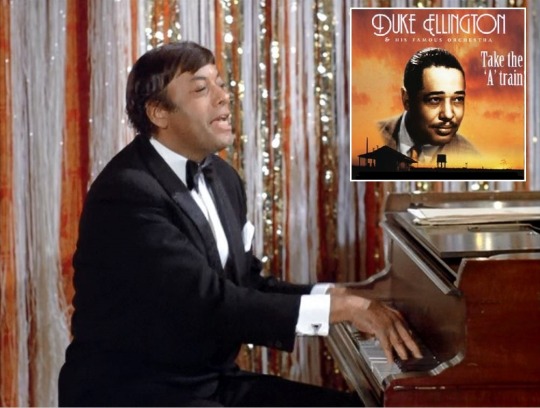
Pianist Marl Young plays in the style of Duke
Ellington,
riffing on"Take
the ‘A’ Train“
by Billy
Strayhorn. It
was
the signature
tune of
the Duke Ellington orchestra.

As the finale, the
entire Phil Harris orchestra plays in the style of Count
Basie
performing Basie’s signature tune “One
O’Clock Jump” while
Lucy does the jitterbug.


In
“Lucy and Sid Caesar” (TLS S6;E23), a starving Frankie the Forger
(Sid Caesar) orders pork chops, a squab stuffed with oyster dressing,
a turkey, lasagna, black-eyed peas, candied yams, corn pone, Virginia
hams, hot bread, turnip beans, fat back, and lima beans! He is
paraphrasing the lyrics to the song “That’s
What I Like About the South.” Interestingly,
the song was not performed by Phil Harris when he was a guest
star on
“The Lucy Show” just
a month earlier.

Bob
O’Brien also wrote “Lucy and Phil Harris” (TLS S6;E20), Harris’
first appearance with Lucille Ball on “The Lucy Show” in 1968.
It was O’Brien’s idea to highlight ethnic diversity in the “Here’s Lucy” script.
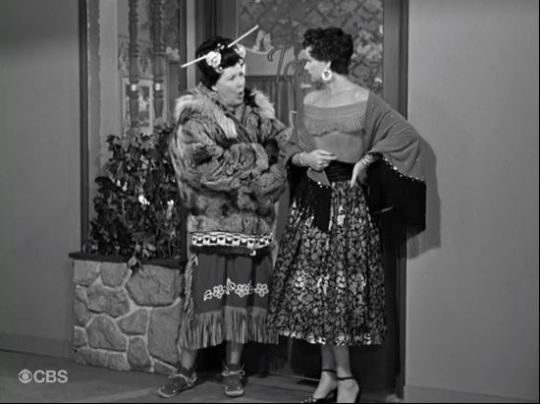
The
costumes Lucy provides for the new band members are reminiscent of “The Black Wig” (ILL S3;E26) where
Lucy Ricardo and Ethel Mertz disguise themselves in a random assortment of theatrical costumes to fool their husbands. Lucy replies that Ethel looks like “An
ad for a trip around the world.”

In “Little Ricky Gets a Dog” (ILL S6;E14) on January 21, 1957)
his parakeets are named Alice and Phil, named after Alice Faye and her husband Phil Harris.
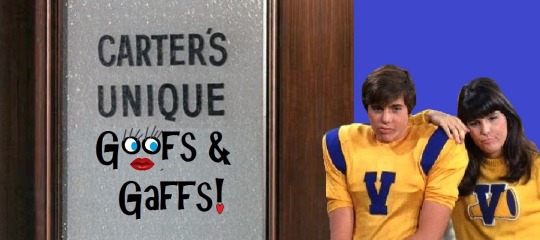

You Break Me Up, Pastel! Harris’
punchline “they
might cut off my whiskey”
makes Lucille Ball laugh in a way that suggests it was an ad lib by
Harris. He mutters something under his breath to Ball along the
lines of “Cut
off his whiskey. You like that?” They try to return to the script, but Harris adds “You
like that, eh Pastel?”
before Lucy regains her composure and continues the scene.

“Lucy and Phil Harris Strike Up the Band” rates 4 Paper Hearts out of 5
Lucy and Harris have a very relaxed rapport on screen. The ‘big band’ medley is one of the best musical segments of the series. And that’s what I liked about this episode!
Leave a comment